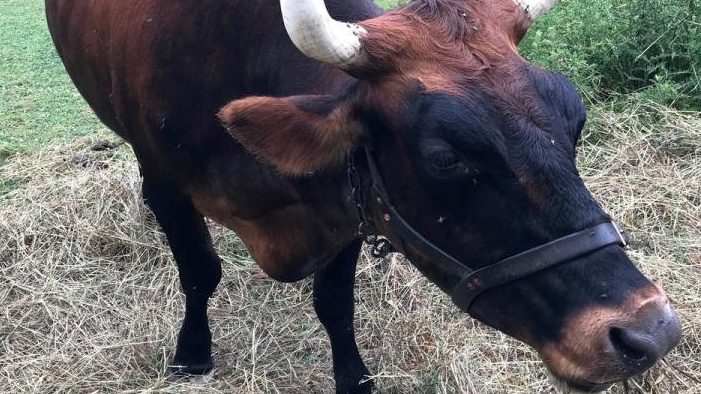
The gap between rich and poor began 7,000 years ago… when land became more valuable than people, say scientists.
Farmers began using ox drawn ploughs to harvest crops instead of their hands and the class system was born.
It enabled them to grow ten times more cereals and vegetables without needing extra workers, according to new research.
Those who owned land and ox teams also began to opt for more stress-tolerant crops, like barley or certain kinds of wheat, that didn’t require much labour.
By the second millennium BC, in many farming landscapes fields stretched to the horizon.
Societies were deeply divided between wealthy landowners, who passed their holdings on to their children and land-poor or landless families.
Co author Professor Samuel Bowles, an economist at the Santa Fe Institute, New Mexico, explained: “Ox drawn ploughs were the robots of the late Neolithic.”
The oxen were a form of technology that separated wealth from labour – a fundamental development in the inequality we see today.
Prof Bowles said: “The effect was the same as today – growing economic disparities between those who owned the robots and those whose work the robots displaced.”
The finding published in Antiquity adds to growing evidence that lasting divisions between the ‘haves’ and ‘have-nots’ can be traced back to the Neolithic or late Stone Age.
But it was kick started by the first farming ‘machinery’ rather than the change from a hunter-gatherer to an agricultural lifestyle, in itself.
The international team’s analysis of data from 150 archaeological sites across Eurasia revealed a steep increase in inequality from around 4,000 BC.
This was about 8,000 years after the advent of farming. They used statistical methods to compare different kinds of wealth, societies, regions and times.
Lead author Prof Amy Bogaard, an archaeologist at the University of Oxford, said: “The surprise here isn’t so much inequality takes off later on, it is that it stayed low for such a long time.”
The finding backs a previous analysis of 300 human skeletons by British scientists that suggested the concept of inherited wealth started with Neolithic man 7,000 years ago.
Co author Prof Mattia Fochesato, an economist at Bocconi University, Milan, said: “The usual story – that the societies that adopted agriculture became more unequal – is no longer valid because we observed some societies who adopted agriculture were remarkably egalitarian for thousands of years.”
Before around 4,000 BC, people across the Middle East and Europe cultivated a patchwork of small garden plots. They were like present day ‘allotments’ in the UK, said Prof Bogaard.
Families would have grown a variety cereal grains as well as lentils, peas, and other pulse crops that needed to be harvested by hand.
Notably, they would have tilled the soil by hand using hoes, in some cases also with the help of unspecialised cattle such as ageing milk cows to pull ploughs.
They would also have to carefully monitor their gardens during the growing season to protect them from wild animals.
Prof Bogaard said: “It was quite a busy landscape, with lots of people working in and around these garden plots.”
Then something changed. Those were well resourced enough to raise and maintain specialised plough oxen saw new opportunities in farming additional land.
A single farmer with an ox team could cultivate ten times or more land than a hoe farmer, and would begin to acquire more and more land to cultivate.
The researchers developed an economic model that reveals a key distinction between farming systems where human labour was the limiting factor for production.
This was compared to systems where it was more expendable, and where land was the limiting factor.
Prof Fochesato said: “So long as labour was the key input for production, inequality was limited because families did not differ much in how much labor they could deploy to produce crops.
“But when the most important input became land, differences between families widened because land and other material forms of wealth could be accumulated and transmitted over generations.
“By chance, or force, or hard work, some families came to have a lot more than others. Then radical inequality arose.”
The new research supports a study two years ago which identified much greater wealth inequality in post Neolithic Eurasia than in the Americas – where domesticated animals that could pull heavy loads were not available.
But the most unequal societies tended to be more fragile and susceptible to political upheaval or climate change, said Prof Bogaard.
The takeaway for people today is “if there are opportunities to monopolise land or other key assets in a production system, people will,” she said.
“And if there aren’t institutional or other redistributive mechanisms, inequality is always where we are going to end up.”
Land is still of relevant value “but there are many other kinds of assets now that we should think about people’s capacity to own and benefit from,” added Prof Bogaard.